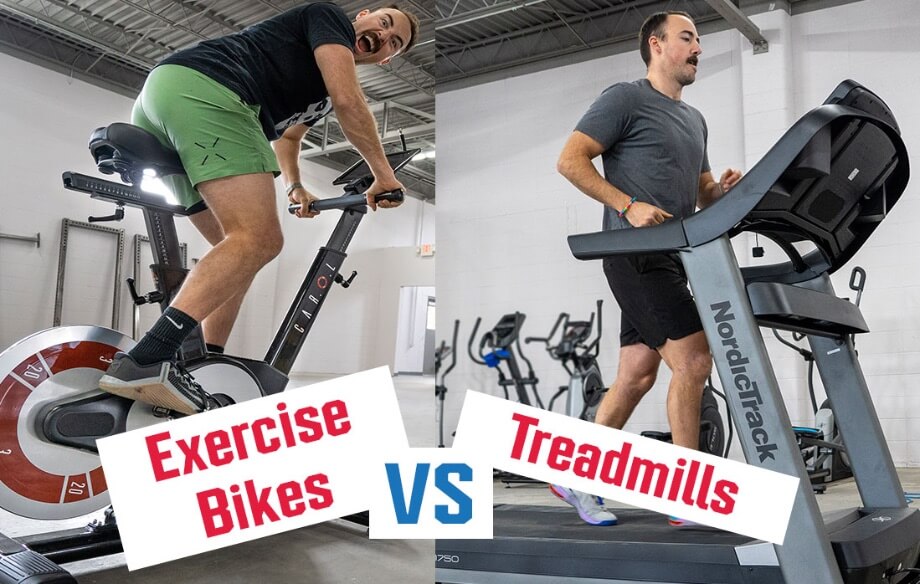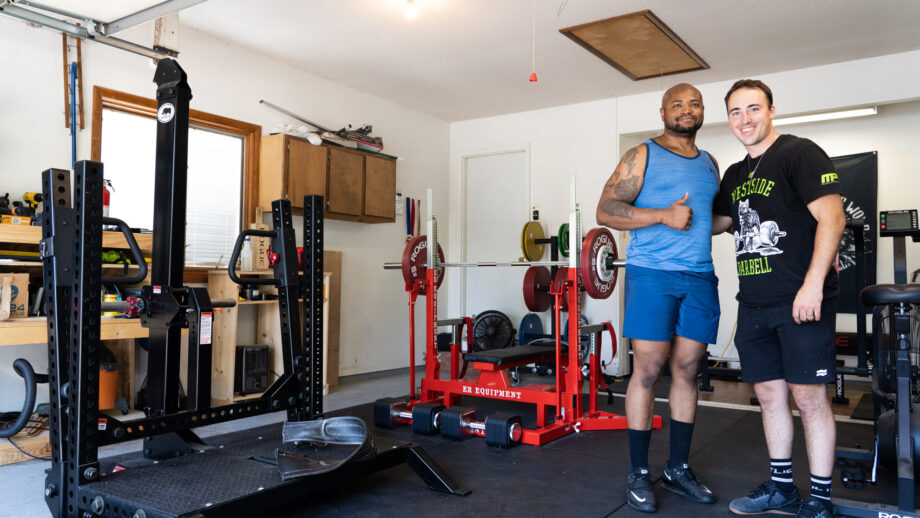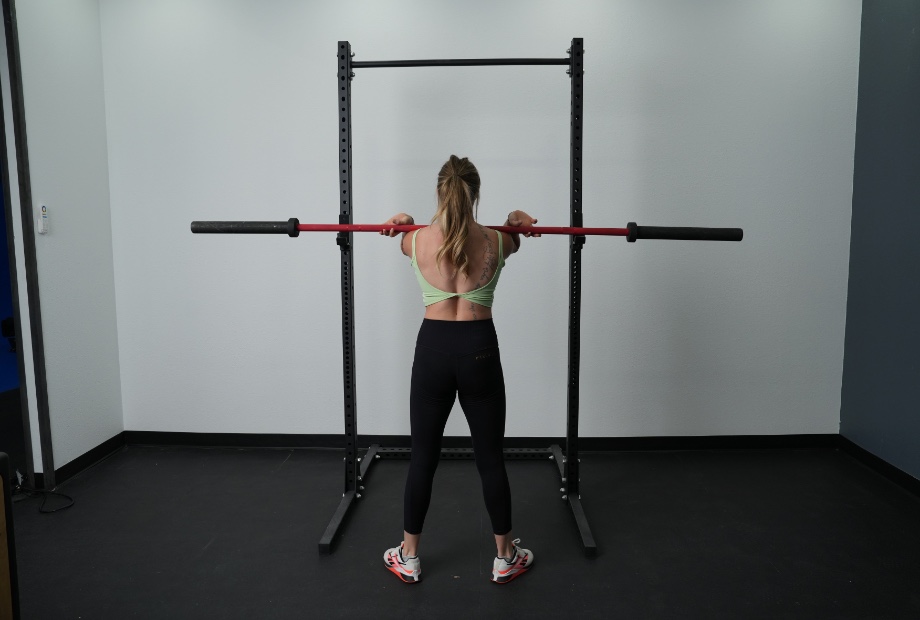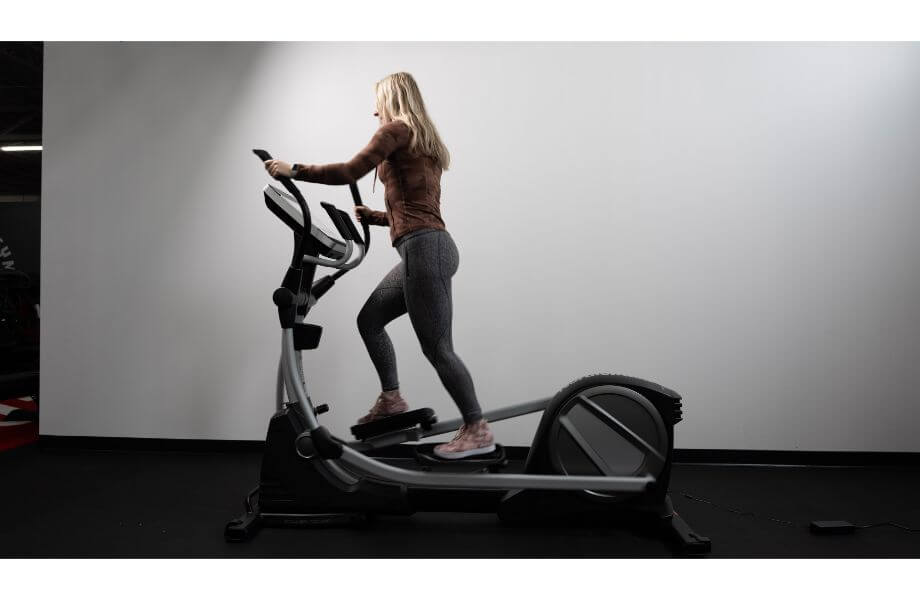Running and biking are two main forms of cardio, making treadmills and exercise bikes two of the most popular pieces of cardio equipment. Both are great options for improving cardiovascular health and building aerobic capacity. They provide convenient options to be able to either run or bike indoors so you don’t have to worry about the weather, terrain, or traffic.
Depending on your own individual fitness goals, the battle between exercise bike vs. treadmill may have a clear winner:
- Do you have specific performance goals?
- Are you looking to lose weight?
- Do you have any prior injuries or orthopedic ailments to consider?
These are all factors to consider when choosing how to perform your cardio workouts. This article will provide information on the different types of treadmills and exercise bikes, their pros and cons, and help you to make an informed decision for your next workout.
Exercise Bikes vs Treadmills Overview
| Exercise Bikes | Treadmills | |
| Calories Burned | Fewer calories burned on an exercise bike. | Twice as many calories are burned on a treadmill. |
| Footprint /Space | Takes up less space and is more convenient for those with limited space. | Takes up more space and is heavier to move. |
| Features | Have options with screens to track exercise progress, but a bike will make less noise for home use. | Have options with screens to track exercise progress, however, a treadmill will make more noise. |
| Cost | $200-$1000 | $200-$2500 |
| Goals | Joint-Friendly Exercise | Weight Loss |
| Ease of Use | Can control the speed so it allows you to start slow and gradually work your way up. | Can control the speed so it allows you to start slow and gradually work your way up. |
| Injury Risk | Low-impact exercise that is less tense on the bones, joints, and tissues. | Safer Option when reducing the risk of injury. Tenser on bones, joints, and tissues. |
| Weight Loss | Exercise bike riding burns fewer calories than treadmill walking or running. | Treadmills will provide better potential for weight loss and caloric burn. |
| Muscles Worked | Quads, hamstrings, calves, and glutes are targeted. Also improve shoulders, core, and back. | Calves, glutes, and hamstrings are targeted. Also improves the core and arms. |
Exercise Bike Pros and Cons
| Pros: | Cons: |
| You can ride or cycle whenever you want for however long you want. | If you are a cyclist, then it will not fully prepare you for riding on the road since there is no turning or dealing with the elements |
| Most have a digital screen that allows you to track data like distance, power output, pace, RPMs, and calorie burn. | For some people, staying in one spot can be boring and not mentally stimulating enough. |
| You can dictate the resistance level so that you can easily train against specific stimuli and perform a variety of different types of cardio and lower body workouts. | On average, biking will burn fewer calories than running, making it less effective for weight loss. |
| It is a great workout for the entire lower body, especially the quads, and can even help build muscle in them. | The bike will focus mostly, if not entirely on the legs so it would not work as a full-body workout. |
| Biking itself is a low-impact exercise for the joints. An exercise bike is even safer by taking out all the dangerous variables of riding outside providing a lower risk of injury. | |
| Compared with a treadmill and other cardio machines, a bike is often more affordable. |
Treadmill Pros and Cons
| Pros: | Cons: |
| They allow you to run at your own convenience whenever you want and for as long as you would like. | Running in place can be boring, especially to someone used to running outside. |
| Many models will be able to track your distance traveled, calorie burn, and even heart rate. | Compared to an exercise bike, it is a high-impact workout on the joints. |
| They can come with built-in treadmill workouts that will vary the speed or incline for you, or you can freely change the variables for yourself. | Some are noisy. |
| Compared to running on pavement, a treadmill may absorb some of the shock helping to preserve the ankles, knees, and back. | Some are big, hard to move, and take up a lot of space. |
| You get a great cardiovascular workout that will improve aerobic and lung capacity. | Some require ongoing maintenance. |
| You don’t have to worry about traffic, bad weather, or other factors related to running outside. | When using a motorized treadmill it won’t train the lower body muscle groups quite the same as running outside or on a manual treadmill because the belt is doing the work of moving forward. |
What Are Treadmills?
A treadmill is an exercise machine that allows you to run in one place by utilizing a belt that is either manually powered or motorized. Before powered machines, treadmill-type devices were used to transfer energy from the movement of animals or people to perform labor. Later, in the 1800s, they were adopted by prisons as a punishment and a way to carry out hard labor tasks.
The first consumer treadmill wasn’t developed until the late 1960s when William Staub noticed that there were no options for affordable home treadmills and designed his own, which he called the Pacemaster 600. He then went on to sell the first home treadmills.
Treadmills can now be found all over the world. From commercial gyms and performance training centers to medical facilities and universities, the treadmill has become an important tool to measure and build cardiovascular fitness. They are mainly used for cardio workouts and as a way to burn calories. Those studying biomechanics may also use treadmills as a way to observe running techniques. Doctors and other medical professionals will sometimes use treadmills as part of a stress test in order to measure the health of the heart and lung capacity.
Some of the more popular brands of treadmills are NordicTrack, Life Fitness, Assault, and ProForm.
Types of Treadmills
Before deciding whether to use or possibly purchase a treadmill, it is important to understand the different types that are out there.
Manual
A manual treadmill has no motor and must be propelled by the lower body muscles of the user. This allows for a more fluid change of speeds, as the belt will speed up and slow down as the runner does. It will also feel closer to normal running as you have to work to move the belt, unlike a motorized treadmill. These can be great for high-intensity interval training.
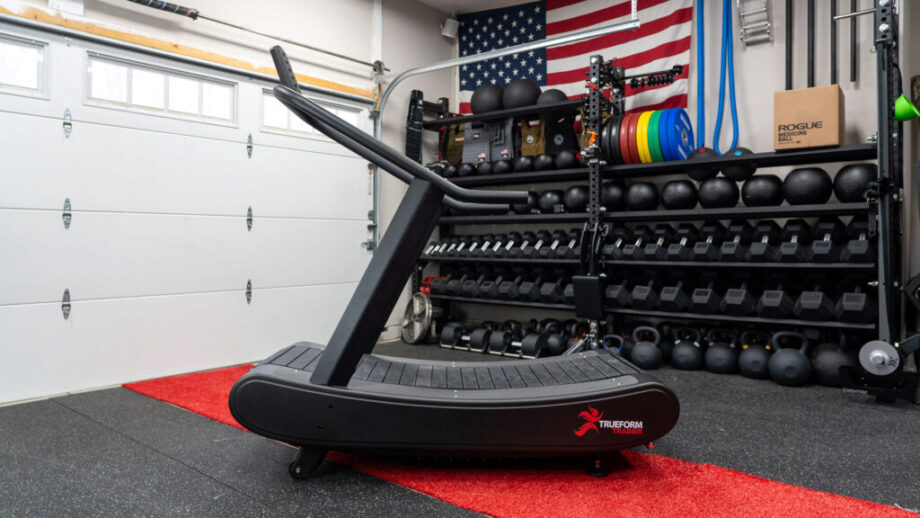
Motorized
These are the treadmills that you most often see in commercial gyms. They have an electric motor that allows the belt to run continuously once started unless stopped by the user. The speed can be controlled from a crawling pace all the way to a fast sprint. Most motorized treadmills will also allow you to raise and lower the incline to simulate going uphill. These will typically require more maintenance than manual treadmills due to the mechanical parts that are necessary for them to operate.
RELATED: Best Manual Treadmills
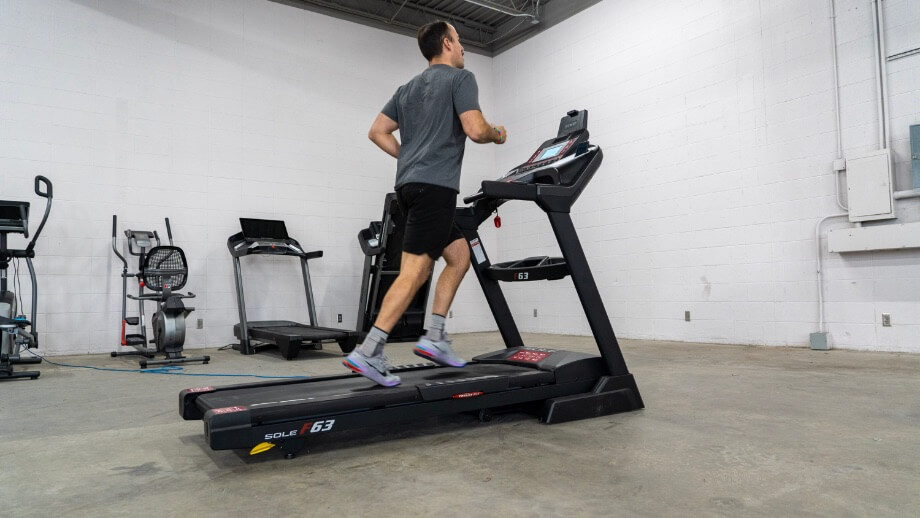
Foldable
A compact treadmill can be ideal for someone trying to conserve space in their home gym. When not in use, they give the owner the ability to “fold” the treadmill up so that it can be stored in a more convenient way. Other than the ability to fold, these treadmills operate the same as other treadmills and can be either manual or motorized.
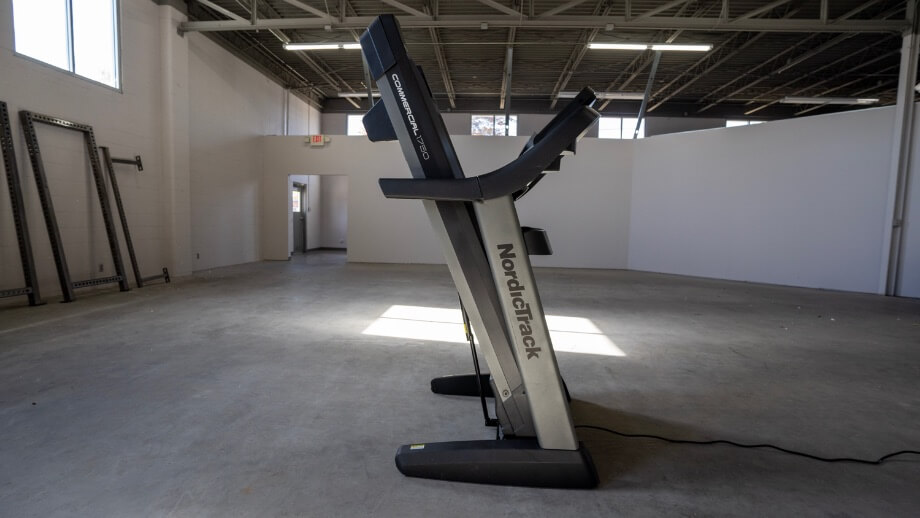
Hybrid
There are a couple of different types of hybrid treadmills. One is a combination of a stair stepper and a treadmill called a treadclimber. It has two-steppers that go up and down that each having its own moving belt. The other is a hybrid between a motorized treadmill and a manual treadmill, giving the user the option to utilize it either way. Hybrid treadmills tend to be more expensive because of their versatility.
What Are Exercise Bikes?
An exercise bike is a stationary piece of exercise equipment pedaled like a bicycle and used for indoor cycling. The standard design includes a seat, pedals, handlebars, and a mechanism to adjust resistance. The exercise bike provides a low-impact cardio workout for people wanting to increase their fitness, lose weight, or even rehab an injury.
Biking is not only good for cardio but also strengthens the quads and hamstrings of the lower body. The concept of a stationary bike has been around since the 18th century, and the first non-motorized exercise bike was marketed and sold to consumers in the 1940s and 50s.
In the late 1960s, a bike was developed with electronics to track exercise progress and would become the stationary bike that we are familiar with today. Exercise bikes can be found virtually anywhere that people work on their fitness including gyms, training facilities, rehab/medical facilities, and in many homes. Companies like Peloton have increased the popularity of exercise bikes by providing a workout class experience from the convenience of home.
Some of the most well-known exercise bike brands are Schwinn, Peloton, Life Fitness, and NordicTrack.
Types of Exercise Bikes
Just like treadmills, there are a few different types of exercise bikes:
Upright Stationary Bike
In upright bikes, the pedals are directly under your seat, forcing you to be in a very vertical position. They often have a more padded seat than a typical bicycle. Typically they do not provide the option to stand as the pedals are not as sturdy as other bikes like the cycle bike.
Studio Cycle Bike
A studio cycle bike is the most similar to a bicycle of any of the types of exercise bikes. With these, the pedals are connected to a flywheel in the front. With special cycling shoes, you can clip into the pedals which will allow you to actively pull the pedals up and engage the hamstrings (though many cycle bikes also have caged pedals so you can wear your gym shoes with them). Many come equipped with a screen that will track data such as distance, rotations per minute, watts, and calorie expenditure.
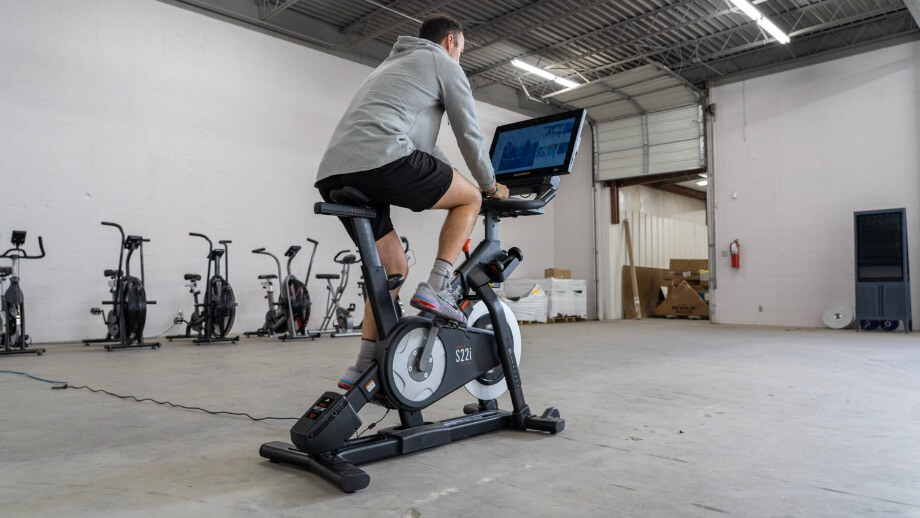
Air Bike
The air bike uses a fan as its form of resistance. On many, both the pedals and handlebars are attached to the fan so you can use the upper body and lower body together to move it against the air resistance. Being able to push and pull with the handlebars provides a full-body workout that is usually not available on other exercise bikes. These are used typically for CrossFit or HIIT workouts.
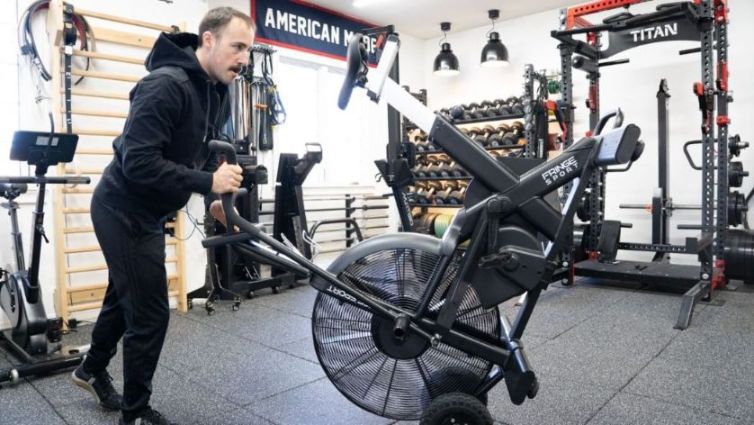
Recumbent Bike
The recumbent bike is intended for people with orthopedic issues. It has a seat with a supportive back that can be adjusted, making sitting on it much more comfortable than other stationary bikes. The pedals are positioned in front of the seat so that the user can sit back and put less pressure on their hips and lower back. These are often used for rehabilitative exercises or for seniors.
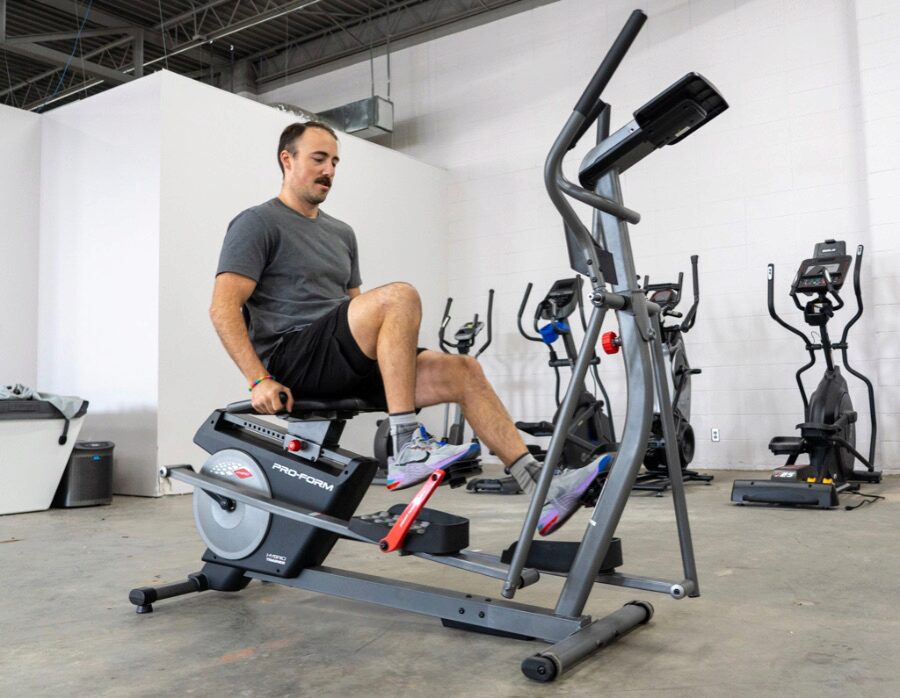
Foldable Exercise Bike
Folding bikes are basically simplified versions of exercise bikes that can easily be folded up to store away when not in use. The foldable bike may be the most easily transportable piece of cardio equipment and are often more affordable than other types. However, the cost and convenience savings also means you won’t find many extras, like fancy screens.
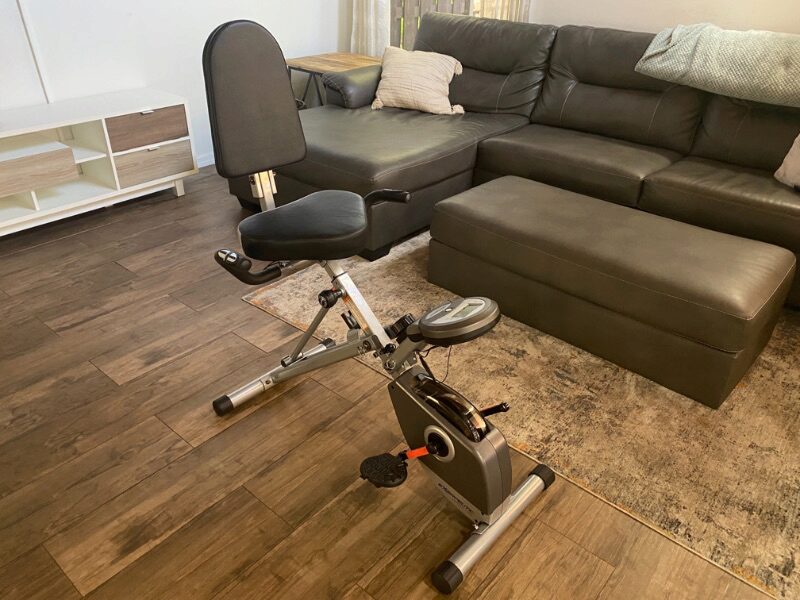
Exercise Bike vs. Treadmill: GGR Readers Make Their Picks
We have our opinions on the great exercise bike vs. treadmill debate, but we’re always curious about what the readers of the Garage Gym Reviews community think, too. That’s part of the reason why we created the Home Gym Community Facebook group, which as of this writing has more than 200,000 members.
So we asked the group: If you could only choose between an exercise bike or a treadmill, which would you pick and why? Most respondents went with the exercise bike, and here are a few of their reasons.
Charlie Francus is an exercise bike fan because he feels they offer more variety than treadmills, especially when it comes to HIIT workouts.
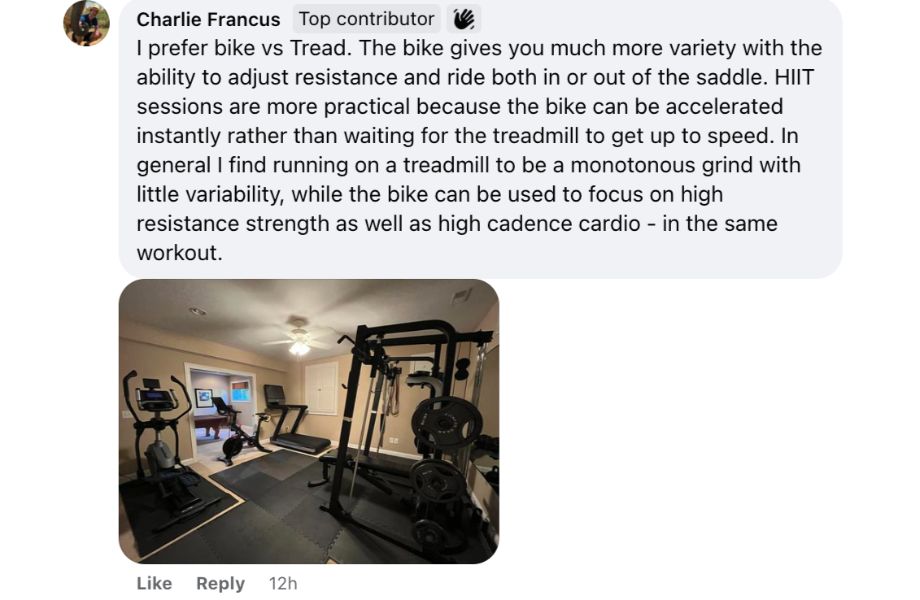
Cameron Townley uses a Rogue Echo Bike, the best air bike in our opinion, because it hurts her knees less than a treadmill.

Jeff Lonczak was the only one who said treadmill, though a few people said bike and treadmill, because he likes it for low-intensity, steady-state cardio (LISS).
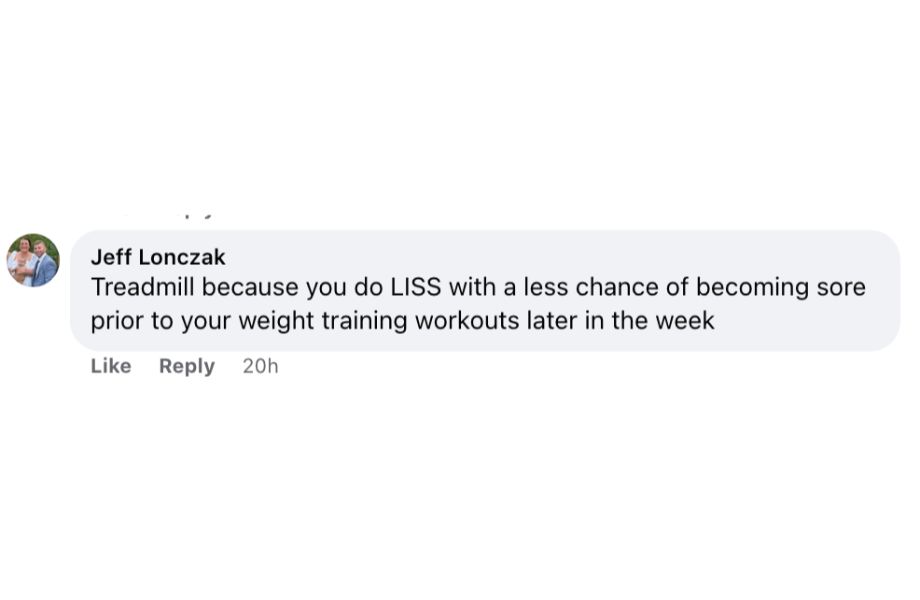
How to Choose Between an Exercise Bike vs Treadmill
If you aren’t sure whether you should pick a treadmill or an exercise bike for your home gym, here are a few things that might help you make your decision:
Calories Burned
No matter whether you are working out on the treadmill or exercise bike, the number of calories burned depends on a few factors, but the average person will burn around twice as many calories running on a treadmill as they will from cycling. This is because the bodyweight is able to be supported by the bike which takes some of the strain off the whole body. If you are only interested in the caloric burn, then the treadmill is the clear winner here.
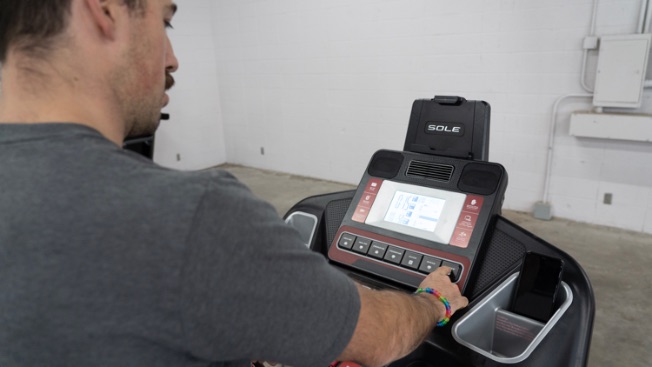
Footprint/Space
Comparing an exercise bike vs treadmill, a treadmill will take up significantly more space than a bike. Even if it is a foldable treadmill, it will typically be much heavier to move as well. The bike will provide a more convenient option for those with limited space.
RELATED: How to move a treadmill
Features
Both treadmills and exercise bikes can have options with screens to track exercise progress. Many of these will also have workout programs that can be followed as well. They also both have ways to vary resistance which helps when trying to perform high-intensity workouts. Comparing an exercise bike vs treadmill, the bike will create less noise if you are choosing one for at home.
Cost
When you differentiate between Exercise bikes vs treadmills, exercise bikes are typically the cheaper option, with most models ideal for home gyms being between $200 and $1,000. Treadmills run from $200-$2,500. The higher quality models are much more expensive whereas the lower-priced one’s durability and maintenance may become an issue.
Your Goals
If you have specific performance goals, like preparing for races, then it is obviously best to choose the option that supports that best whether it is a running or cycling race. If you want to get fit but also need a joint-friendly workout, the bike will be a better option. If you are looking for mainly weight loss, then the treadmill may be a better option because of its ability to burn calories.
RELATED: How to choose an exercise bike
Enjoyment Factor
It is important to keep in mind that regardless of features and positive effects on fitness, you should enjoy the method you are choosing. If you are looking to lose weight but hate running, then stick with the bike as it is less likely you will do something you hate.
RELATED: Are exercise bikes good for weight loss?
Ease of Use
Both are pretty easy to use and are good for beginners. With either machine, you can control the speed so it allows you to start slow and gradually work your way up.
Injury Risk
Treadmills are often safer than exercise bikes when it comes to reducing the risk of injury. Cycling is a low-impact exercise that is less intense on the bones, joints, and connective tissues than jogging or walking on a treadmill.
Weight Loss
Regardless of the type of exercise you do, the number of calories you burn is determined by your weight loss, as well as the intensity and duration of your activity. Treadmill running burns more calories per minute than exercise bike riding, whereas treadmill walking burns more calories per minute than exercise bike riding.
Muscles Worked
Comparing an exercise bike vs treadmill, the quads, hamstrings, and calves are all pretty much worked on exercise bikes, with the glutes being worked to a lesser level. Spin cycles also help to improve the shoulders, core, and back. When you stand on a bike, it becomes a total-body workout. If you don’t hang onto the handrails, walking and running on a treadmill will train all of the muscles in your lower body, as well as your core and arms. The calves, glutes, and hamstrings are particularly targeted when the incline on the treadmill is increased.
RELATED: Treadmill Benefits
Final Verdict
Treadmills vs exercise bikes both offer a great cardio workout that can improve your aerobic fitness level. Which one is better depends on what you are looking for out of your cardio machine. Treadmills will provide better potential for weight loss and caloric burn, and exercise bikes have a lower impact on the joints, will take up less space, and can be more affordable. Either way, you can’t go wrong as long as you are clear on your fitness goals and assess which will be the best option to help you reach those goals.
Exercise Bike vs Treadmill FAQs
Which is better, an exercise bike or a treadmill?
It depends on your situation and specific needs. What are your fitness goals? Do you have any orthopedic issues? What is best for one person might not be as effective for someone else. Generally, treadmill workouts can burn more calories, and exercise bikes are more joint-friendly.
Is the treadmill or an exercise bike better for losing weight?
Based on the ability to burn calories, the treadmill would be more effective for weight loss if exercising for the same amount of time and relative effort level on each.
What is the best exercise bike on the market?
There are a few exercise bikes that we really like. It depends on your preference. Our choice for best overall is the NordicTrack S22i. For a budget-friendly exercise bike, we really like the Sunny Health & Fitness Magnetic Cycling Bike and YOSUDA Bike.
What is the best treadmill on the market?
The best treadmill on the market is the one that you’ll actually use. If you want a non-motorized treadmill, we like the Assault Runner Pro and the TruGrit Runner. For motorized treadmills, we like the NordicTrack Commercial 1750 treadmill and the Sole F63 Treadmill.
How much does an average treadmill cost versus an average exercise bike?
The average treadmill is between $200 and $2,500, and the average exercise bike is $200-$1,000.


